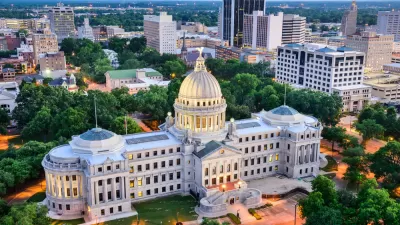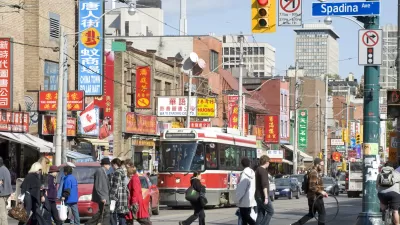Recent figures from the 2010 U.S. Census highlighted the fact that many cities remain racially segregated. This commentary argues that this situation is unlikely to change.
Earl Ofari Hutchinson writes that trends of whites fleeing for the suburbs and urban centers increasing in minority populations have been going on for decades and that they will continue.
"A casual drive through any of the major urban neighborhoods in America, a walk through the neighborhood schools, hospitals, and clinics reveal the stark pattern of the two Americas. In fact, even three or four urban Americas: an America that is poor, black and Latino; an America that is black and middle class; an America that is white, working class and middle class; and one that's white and wealthy.
But whichever urban America one travels through, the line dividing the neighborhoods is as deep as the Grand Canyon. There are the usual suspects to blame for the rigid segregation. Poverty, crime, lender redlining, a decaying industrial and manufacturing inner city, white and middle-class black and Hispanic flight, crumbling inner-city schools, the refusal of major business and financial institutions to locate in minority neighborhoods, and cash-strapped city governments that have thrown in the towel on providing street repairs and basic services."
FULL STORY: America’s Most Segregated Cities Likely to Stay That Way

Alabama: Trump Terminates Settlements for Black Communities Harmed By Raw Sewage
Trump deemed the landmark civil rights agreement “illegal DEI and environmental justice policy.”

Study: Maui’s Plan to Convert Vacation Rentals to Long-Term Housing Could Cause Nearly $1 Billion Economic Loss
The plan would reduce visitor accommodation by 25% resulting in 1,900 jobs lost.

Why Should We Subsidize Public Transportation?
Many public transit agencies face financial stress due to rising costs, declining fare revenue, and declining subsidies. Transit advocates must provide a strong business case for increasing public transit funding.

Paris Bike Boom Leads to Steep Drop in Air Pollution
The French city’s air quality has improved dramatically in the past 20 years, coinciding with a growth in cycling.

Why Housing Costs More to Build in California Than in Texas
Hard costs like labor and materials combined with ‘soft’ costs such as permitting make building in the San Francisco Bay Area almost three times as costly as in Texas cities.

San Diego County Sees a Rise in Urban Coyotes
San Diego County experiences a rise in urban coyotes, as sightings become prevalent throughout its urban neighbourhoods and surrounding areas.
Urban Design for Planners 1: Software Tools
This six-course series explores essential urban design concepts using open source software and equips planners with the tools they need to participate fully in the urban design process.
Planning for Universal Design
Learn the tools for implementing Universal Design in planning regulations.
Smith Gee Studio
Alamo Area Metropolitan Planning Organization
City of Santa Clarita
Institute for Housing and Urban Development Studies (IHS)
City of Grandview
Harvard GSD Executive Education
Toledo-Lucas County Plan Commissions
Salt Lake City
NYU Wagner Graduate School of Public Service





























